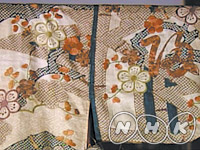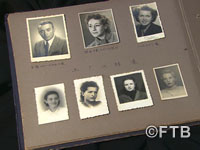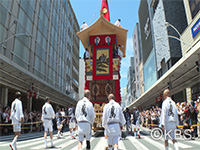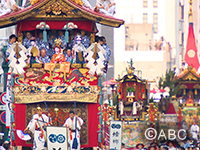Documentary : Traditional Culture
![]()
 The Mark of Beauty | Yuzen-dyed Kimono
The Mark of Beauty | Yuzen-dyed Kimono
DC330801![]()
美の壷 | 友禅 [NHK]
![]()
![]()

|Length : 25min. |Year : 2008 |
There are many types of kimono in Japan, depending on the pattern and style, and one of the most gorgeous is the yuzen kimono. Introducing the transcendent yuzen craftsmanship that makes possible a painting-like freedom of design, the scrupulous selection of water to support the richness of color, and the caution points women must observe when wearing this kimono, Yuzen-dyed Kimono reveals the splendidly complex dyeing process that makes yuzen kimono so alluring.
Visas of Life: Japanese People who Saved 6000 Lives
DC281558![]()
私をおぼえていてください 素敵な日本人へ [FTB]
![]()
![]()

|Length : 48min |Year : 2015 |
It is said that during the Second World War, around 6 million Jewish lives in Europe were lost by the hand of Nazi Germany. However, 6000 Jewish people were saved by being able to leave Europe thanks to transit visas issued by Chiune Sugihara, who worked for the Japanese consulate in Lithuania at the time. Crossing the Soviet Union by the Trans-Siberian Railway, the Jewish refugees were able to flee by boat from Vladivostok to the harbor of Tsuruga in Japan.
Many stories that were buried in the stream of history have been kept afloat in the memories of the Sugihara survivors. It is because of their testimony that we come to think this is a precious and important part of history, and something that should never get lost.
Gion Festival-The Road to the Historic Float’s Restoration-
DC272339![]()
祇園祭 鷹山復興への道 196年の眠りから覚めて [KBS]
![]()
![]()





|Length : 52min |Year : 2023 |
Gion Festival, one of the most famous festivals in Japan, includes many rituals and events during the month of July every year. The most famous of these are the float processions held on the 17th and again on the 24th. All the floats are festooned with gorgeous ornaments and are pulled and pushed through the main streets of Kyoto.
On July 24, 2022 the Takayama Float which had not been seen for 196 years, was seen once again in the second parade.
Over the years there had been many failed attempts to revive the Takayama Float. But it wasn’t until 2022 that this fabled float would once again proudly join the parade again. It wasn’t easy, but thanks to many people’s efforts, the Takayama Float enjoyed a rebirth after nearly 200 years, marking the beginning of a new chapter in the history of the festival.
Dydo Group “Matsuri” of Japan Namahage The Deities That Come on New Year’s Eve
DC272138![]()
ダイドー 日本の祭り「大晦日に訪れる神々男鹿のナマハゲ」 [AKT]
![]()
![]()

|Length : 48min |Year : 2021 |
In Akita Prefecture, up in northern Japan... a traditional ritual where deities called “Namahage” come to people’s houses has been carefully preserved by the 90-or-so villages of Oga City.
We’ve followed their footsteps over the course of 20 years. Each village has established its own style, and the tradition even died out in one of the villages but was revived again. The program focuses on three particular villages. Discover what these Namahage that go from house to house scolding children and those that have been lazy signify for the people of Oga.
Gion Festival 1150th Anniversary -The Essence of Japanese Culture and the Spirit of the Townspeople
DC272037![]()
祇園祭~創始1150年!時代の波を乗り越えて~ [ABC]
![]()
![]()

|Length : 61min |Year : 2020 |
This program follows the Gion Festival as it celebrates its 1150th anniversary and provides an exclusive in-depth look at some of its lesser-known rituals and the floats whose decorative artworks from around the world have earned them the nickname "moving art museums." It also highlights the dedication of the people who put on the festival and explores the essence of Japanese culture.
Summer in Kyoto is synonymous with the magnificent Gion Festival that attracts more than a million visitors each year. Born from a desire to quell disasters following a devastating plague and earthquake in 869, the festival has continued uninterrupted for 1150 years despite numerous wars and natural disasters because of the indomitable spirit of the people of Kyoto. Today, the Gion Festival features 34 splendiferous floats featuring artworks from abroad and craftsmanship by top Japanese artisans.















